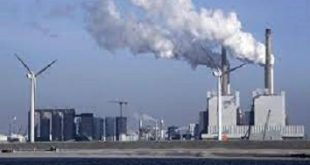Denmark, one of the wealthiest and most progressive countries in Europe, keeps raising the bar for social welfare, environmental sustainability, and economic prosperity. But as 2024 brings with it new difficulties, the Danish government and people are debating how to keep this precarious equilibrium.
Economic Stability Despite Worldwide Uncertainty
With a solid welfare state, a healthy labour market, and a high standard of living, Denmark’s economy is still strong. The nation’s GDP increased by 2.8% in 2023 as a result of large investments in green technology, exports, and domestic consumption. Denmark continues to have one of the lowest unemployment rates in the European Union, averaging about 4%.
Denmark’s significant emphasis on innovation and technology is one of the cornerstones of its economic success. In fields like biotechnology, information technology, and renewable energy, the nation leads the world. The city, Copenhagen, has become a vibrant centre for tech entrepreneurs, drawing in talent and finance from throughout the globe.
Nonetheless, Denmark’s economy is susceptible to worldwide unpredictability. Growing inflation has been a concern for both consumers and businesses due to increases in energy prices and supply chain disruptions. In an effort to combat inflation, the Danish Central Bank has raised interest rates gradually. This approach is intended to stop price increases, but it may also impede economic growth.
Furthermore, Denmark is susceptible to changes in the global economy due to its reliance on exports, notably in the agriculture and pharmaceutical sectors. Potential threats to Denmark’s economic stability in the upcoming years include the effects of climate change on agriculture and the continued trade tensions between major international powers.
Environmental Issues and Leadership
Denmark has always been a leader in environmental sustainability, setting high standards for cutting carbon emissions and establishing a green economy. One of the world’s most ambitious climate plans, the Danish government has set a target to reduce greenhouse gas emissions by 70% by 2030 compared to 1990 levels.
Denmark’s green transition is not without difficulties, though. There are discussions concerning land usage, the effects on nearby communities and ecosystems, and the rapid growth of renewable energy infrastructure. Residents in rural areas have opposed the development of new wind farms due to concerns about potential effects on wildlife, noise, and aesthetics.
Furthermore, Denmark is criticised for its contribution to global emissions from its agriculture industry, despite being a leader in lowering domestic emissions. Dairy and pork products are two of Denmark’s top exports worldwide and are major contributors to greenhouse gas emissions. It is still a difficult task for policymakers to strike a balance between the need to reduce emissions and the requirement to preserve a robust agriculture economy.

Maintaining Social Cohesion in a Changing Population
Denmark is proud of its social model, which is typified by a robust social safety net, high levels of equality, and a comprehensive welfare state. Because of its emphasis on social welfare, healthcare, and education, the nation routinely ranks highly on indexes of quality of life and worldwide happiness.
But demographic shifts in Denmark are straining the country’s social structures. As the population ages quickly, there is a greater need for pensions and healthcare. Concurrently, the birth rate continues to be low, which raises questions about the welfare state’s long-term viability.
Another area in which Denmark is challenged is immigration. The integration of immigrants and their effects on Danish society are topics of increasing discussion, despite the fact that the nation has a more liberal immigration policy than some of its European neighbours. The rise of the right-wing populist Danish People’s Party is indicative of growing anxieties about immigration and national identity among some sections of the public.
The Danish government has put in place a number of measures, such as language training programs, job placement campaigns, and educational changes, with the goal of enhancing integration. Social conflicts still exist, nonetheless, especially in urban areas with a high concentration of immigrant communities. One of the biggest challenges in the upcoming years will be ensuring social cohesiveness while allowing immigrants to fully engage in Danish society.
Denmark’s Position in the Global Arena
Denmark’s influence in international affairs is still rather strong, especially in the UN and the European Union. The nation uses its clout to advance these ideals internationally and is a fervent supporter of democracy, environmental preservation, and human rights.
Denmark’s dedication to global development also influences its foreign policy. As one of the few, the nation contributes 0.7% of its Gross National Product (GNI) to foreign aid, meeting the UN objective. Danish aid initiatives concentrate on issues including health, education, and climate change, with a focus on assisting underprivileged populations in developing nations.
Denmark is a NATO member and has participated extensively in foreign military actions, which contributes to its security. However, there have occasionally been internal discussions regarding Denmark’s participation in NATO missions due to worries about the ramifications for the nation’s reputation for peace and humanitarianism.





